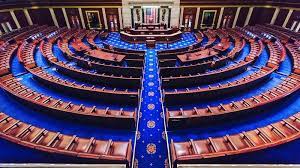2020 was a Census year. That means 2021 is a redistricting year. Population shifts across the country as well as within states necessitate the redrawing of Congressional districts, so that each represents a roughly equal proportion of voters.
How those districts get redrawn can be very, uhh…”creative”, and not in a good way. The practice of “gerrymandering” dates all the way back to the early 1800s. It’s named after Massachusetts politician Eldridge Gerry who when given the opportunity to redraw districts around Boston, created one said to resemble a mythological salamander.
When the time comes to redraw, the party in power in a given state often uses the opportunity to significant political advantage. They may scheme to eliminate a Congressman from the opposing party, or manipulate borders according to class or racial lines. For examples of how ridiculous it can look, check out Ranker’s list of the “The Most Gerrymandered Districts in America.
Here are pictures of a few, courtesy of Statista:

Fresh435 will keep an eye on this issue for you, with reports on new map proposals and enacted changes. We’ll tell you who benefitted and how egregious the changes may be. Stay tuned to what is an always interesting exercise.
Check out our first piece on net seat changes for 2022.




